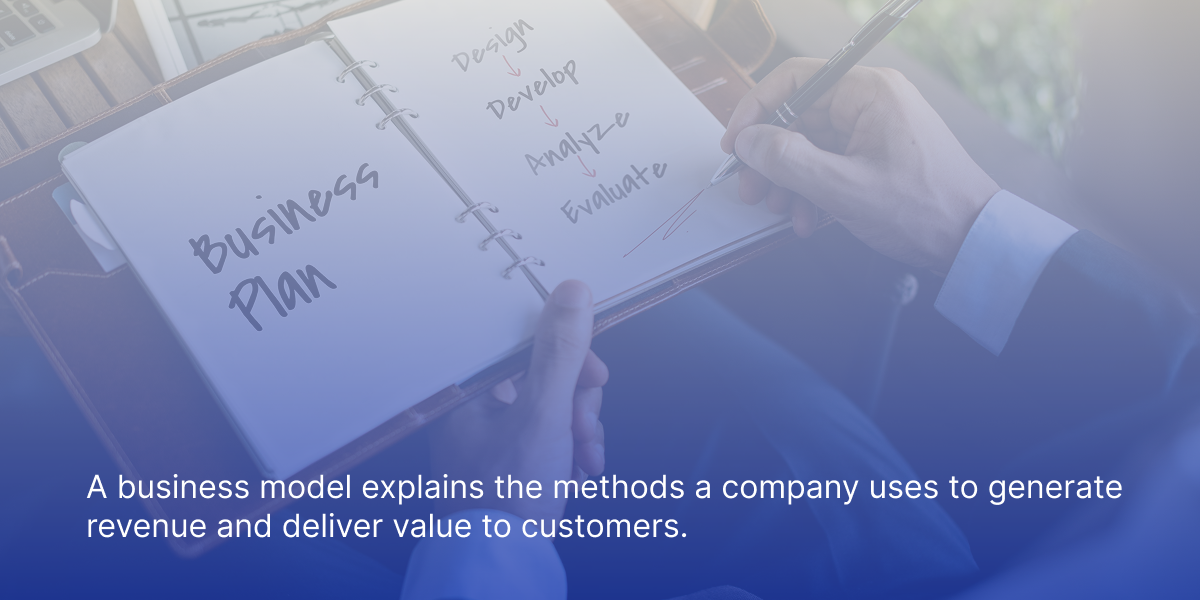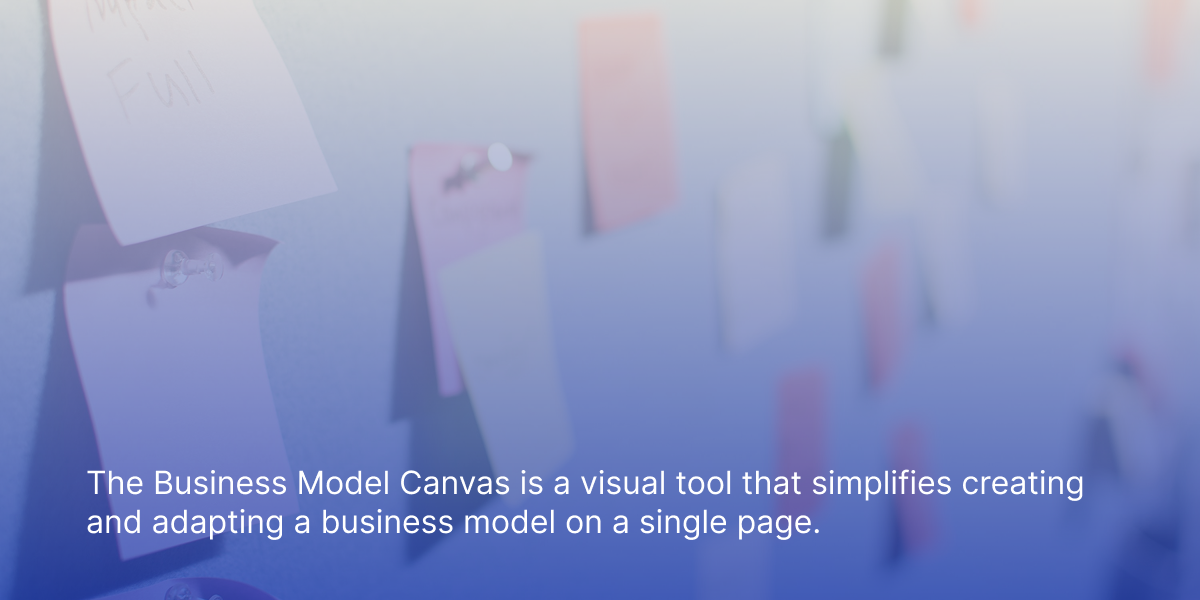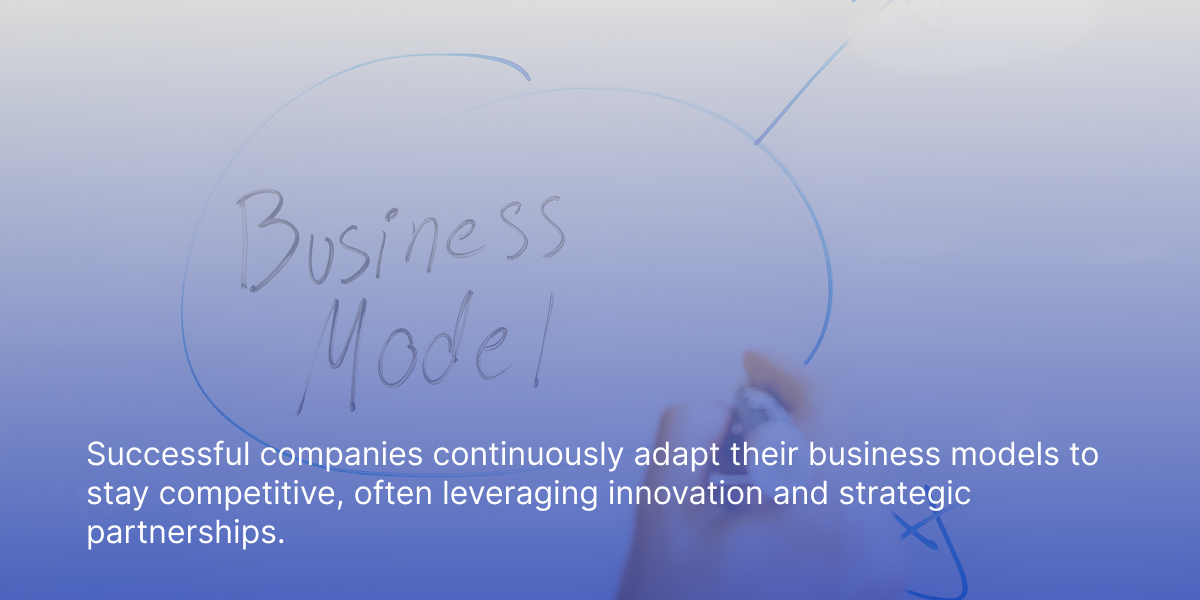Need to know how to create business models? Evaluating and developing a strategic framework for your business idea is crucial. This guide breaks down the steps you need. Learn about market research, defining value propositions, and choosing revenue streams. Let’s get started.
Key Takeaways
- A business model defines how a company creates, delivers, and captures value, serving as the foundation for strategic planning and decision-making.
- Key steps to create an effective business model include conducting market research, defining a strong value proposition, identifying customer segments, and establishing revenue streams.
- The Business Model Canvas provides a visual framework that simplifies model creation and ensures alignment among stakeholders, facilitating quicker adaptations to changing market dynamics.
- Making strategic decisions is crucial in developing a business model. These decisions are foundational in delivering value to customers and ensuring profitability. A well-defined value proposition guides these strategic decisions, aligning various business activities with customer needs and market demands.
Introduction to Business Models
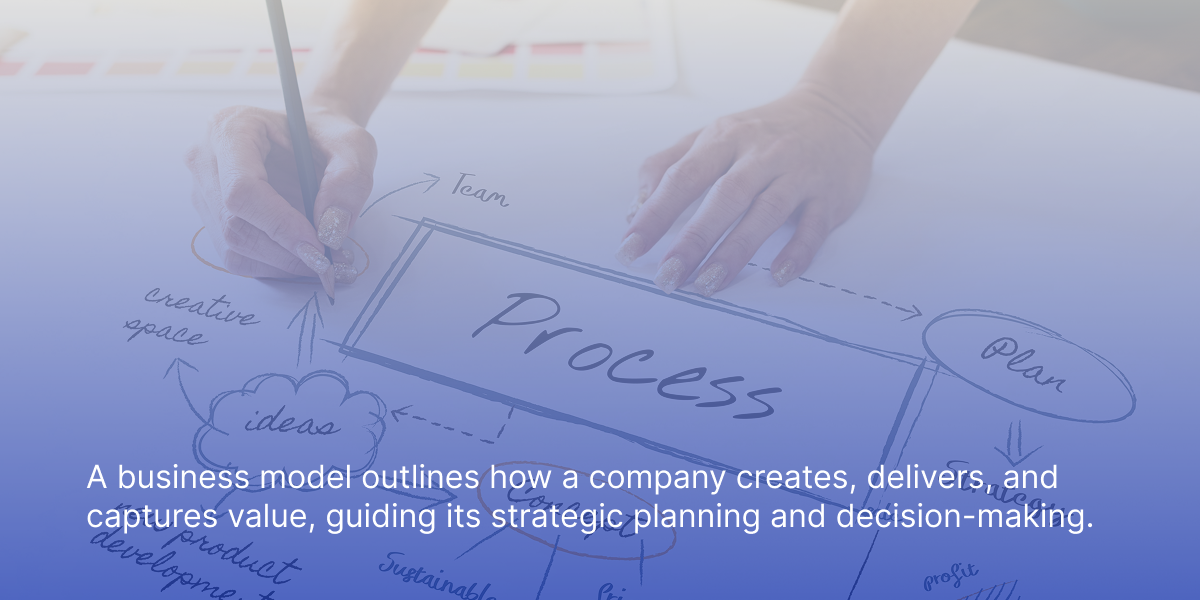
Building a business model is essential as it serves as a roadmap that aligns the organization’s goals with market needs and opportunities. Many businesses encounter challenges while building a business model, including market uncertainty, inadequate market research, and unclear value propositions. Limited resources, such as capital and expertise, may further impede the business model development process.
A business model outlines how a company creates, delivers, and captures value. Key components of a business model typically include the value proposition, target audience, distribution channels, revenue streams, and cost structure. Business models vary widely across industries and can evolve over time in response to market dynamics and technological advancements. A robust business model aligns the company’s strategy with its operations, ensuring sustainability and competitiveness in the marketplace.
Understanding Business Models
A company’s business model describes the process by which it produces income and delivers value to its clients. It specifies the strategies used by a company to generate and provide value, acting as the cornerstone of any prosperous venture. The success in making a business model work can significantly affect an organization’s capability for sustained operation and expansion.
Having a well-defined business model is essential for guiding choices and strategic planning within a firm. It ensures alignment between organizational objectives and market demands, enabling fruitful discussions that contribute to innovations in the business model. This harmony is critical for devising an effective business strategy and securing an edge over competitors.
Perceiving value in commerce varies among customers due to their distinct necessities and anticipations. Acknowledging these differences is vital when crafting a business model that appeals effectively to your intended audience. In summary, your company’s approach towards creating, delivering, and capturing value lays out the groundwork of your overall business plan.
Steps to Create a Winning Business Model
Developing a successful business model entails engaging in a strategic process that molds the way your enterprise functions and thrives. This endeavor extends beyond simply determining the revenue streams of your company. It involves an intricate understanding of every aspect of the business model and how these elements interact with one another.
To simplify this complex undertaking, we’ll dissect it into digestible segments, each indispensable to crafting the overall structure of your business model design. Starting from carrying out extensive market research to formulating a cost-effective framework, every phase will deliver practical knowledge aimed at strengthening competitive edge and encouraging innovation within your business’s framework.
By undergoing thorough market analysis and establishing an efficient cost infrastructure among other steps, you’re not just gaining insights valuable for bolstering competitiveness, but also instigating innovations that can lead to unique competitive advantages – hallmarks of a winning operation. The iterative process of refining and adapting your business model through ongoing analysis and research is crucial for maintaining agility and fostering continuous improvement.
Conduct Market Research
Undertaking thorough market research is fundamental in grasping the nuances of your various customer segments and their requirements. By collecting detailed information on what customers prefer, how they act, and the challenges they face, you can customize your products or services to fulfill distinct customer needs more effectively. This practice plays a crucial role in segmenting customers accurately and boosting their overall satisfaction.
It’s critical to examine what competitors are doing to find ways you can set your offerings apart from theirs. Keeping up with evolving market trends is also essential for spotting changes that might influence the way your business operates. Staying ahead by adapting promptly ensures that not only does market research shape your original business model, but it also facilitates continuous innovation within that model.
Define Your Value Proposition
The cornerstone of your business model is a robust value proposition, which distinctly communicates the unique way in which your product or service meets customer needs. If this crucial element isn’t explicitly defined, there’s a risk that potential customers may not fully grasp what you offer, resulting in lost chances.
Creating an attractive value proposition requires integrating both numerical and subjective factors. Quantitative aspects encompass elements such as cost, efficiency, and terms of delivery. Whereas qualitative facets relate to ease of use and aesthetic design. A well-articulated set of value propositions is essential for attracting new customers and ensuring their long-term satisfaction with your offerings. This is why customers choose your product or service over competitors, as it clearly answers the fundamental question of differentiation.
Identify Customer Segments
Businesses can enhance their offerings by dividing their customer base into segments based on specific demographics and behaviors. This approach to customer segmentation allows for more targeted marketing and product development, ensuring that the needs and preferences of each customer segment are addressed effectively.
Developing buyer personas is a strategy that builds upon this understanding of your target audience. These detailed profiles depict individual characteristics of customers, which helps businesses fine-tune their marketing strategies to better connect with these groups, ultimately leading to improved customer satisfaction.
Choose Revenue Streams
Choosing an effective revenue model is critical to the sustainability of a business model. There are numerous forms of revenue streams available, including subscription models, direct sales, advertising revenue, and distinct types of revenue models. Each comes with its own set of benefits and obstacles that need consideration based on the target market and specific industry dynamics in order to select the most beneficial ones for success.
Take an industrial 3D printing company as an example. It could shift from merely selling products to providing services aimed at generating recurring income. Enumerating all possible sources of income within their business strategy ensures transparency in oversight and aids in proficiently overseeing each individual stream.
Design Distribution Channels
Choosing appropriate distribution channels is essential for conveying your company offers to your customers. Selecting the optimal combination of direct and indirect channels can ensure that your products or services are effectively delivered to your target market, while also aligning with customer preferences to boost their satisfaction.
To design an efficient distribution channel strategy, it’s important to recognize the most effective methods for reaching out to customers and remain adaptable in response to their evolving tastes. By doing so, you maintain a competitive edge and agility within a constantly shifting marketplace, thereby sustaining customer satisfaction.
Map Customer Relationships
It is essential to chart out customer relationships in order to sustain and improve the level of customer satisfaction. Customer relationships can be broadly categorized into two types: personal and automated, with each category having distinct strategies and associated expenses.
Deciding on the appropriate kind of customer relationship hinges on your preferred degree of engagement as well as whether interactions occur face-to-face or digitally. By assessing these considerations, you can develop a strategy that optimizes retention rates and overall satisfaction among customers.
Identify Key Resources
Essential assets that are necessary for the creation of products and the provision of value to customers are termed key resources. These can encompass employees, financial capital, as well as intellectual property. Key resources can be secured by a company through purchase or lease arrangements, or they may be sourced from key partners.
It is critical to pinpoint and administer these business resources effectively in order to ensure seamless functioning within your enterprise while preserving an advantage over competitors.
Plan Key Activities
Recognizing the essential tasks crucial for a business to operate successfully is vital. These specific activities differ across sectors and are paramount in securing business triumphs. For instance, software development takes precedence within a company that specializes in software, whereas Dell, as a PC manufacturer, places substantial importance on managing its supply chain.
Thorough comprehension and strategic planning of these pivotal actions contribute to efficient business operations and maintaining competitiveness. It aids in harmoniously integrating daily functions with overarching corporate strategies and fosters insightful decision-making at the strategic level.
Establish Key Partnerships
Creating essential partnerships, including joint ventures, is crucial for enhancing efficiency in operations and minimizing risk. Such collaborations might take the form of strategic alliances, joint business ventures, or relationships between buyers and suppliers. By joining forces with other companies or service providers, your business can improve its potential and encourage innovation.
Notable instances of significant partnerships are seen in Tesla’s cooperation with producers of batteries and Facebook’s collaboration with content creators. These collaborative efforts supply vital resources and open doors to fresh markets, which play a pivotal role in forming a prosperous business model.
Build a Cost Structure
Grasping your cost structure means identifying the difference between costs that are consistent regardless of output, known as fixed costs, and those that fluctuate with production levels, known as variable costs. In a business model, the cost structure encompasses all expenses necessary for running the operation effectively, delivering value to consumers efficiently, and sustaining relationships with customers. Providing a detailed description of these expenses, including amounts needed for various costs such as equipment purchases or salary coverage, can help in clearly outlining the specific uses of the requested funds and instill confidence in potential investors.
Employing successful strategies to manage these expenditures is crucial for enhancing profit margins. This process involves pinpointing key areas where spending occurs and recognizing major costs within those categories. Adopting a comprehensive strategy focused on being cost-driven can secure financial well-being for your enterprise.
Creating a Business Plan
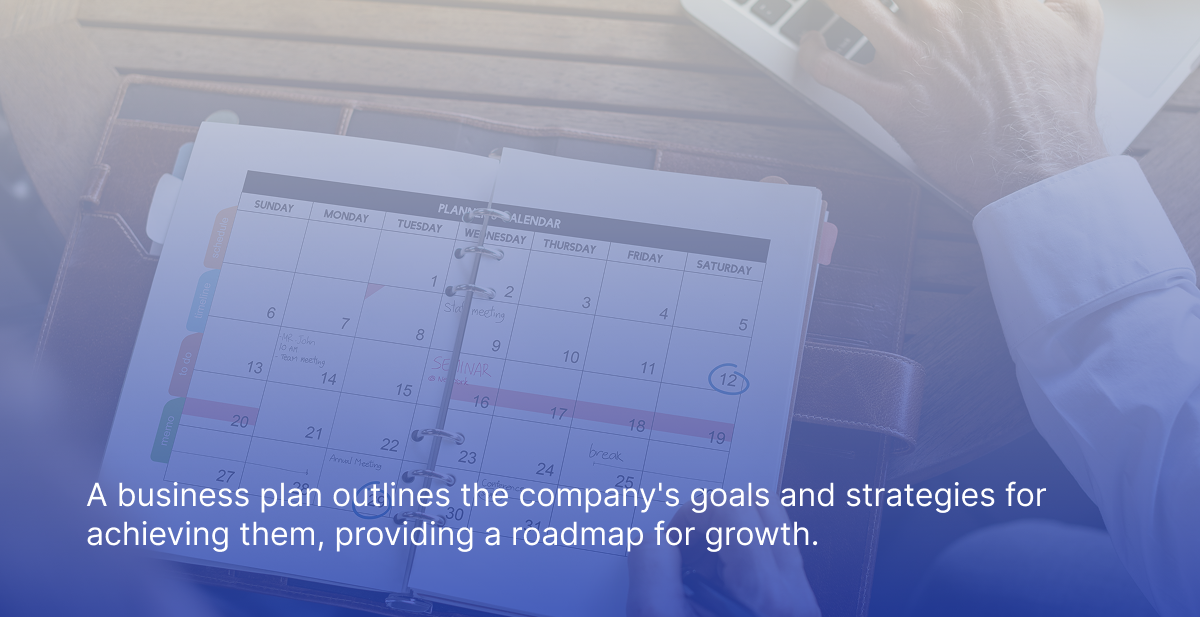
A traditional business plan typically includes sections such as an executive summary, company description, market analysis, products or services, marketing and sales, operations, management and organization, financial projections, and funding request. In contrast, a lean startup plan is a more concise and flexible approach, focusing on the key elements of the business model, such as the value proposition, customer segments, revenue streams, and cost structure.
A business plan should be tailored to the specific needs and goals of the business and should be regularly reviewed and updated to reflect changes in the market and the company’s progress. By creating a well-structured business plan, entrepreneurs can increase their chances of success, secure funding, and build a strong foundation for their business.
Using Business Model Canvas
The Business Model Canvas, initially presented by Alexander Osterwalder and Yves Pigneur, serves as a streamlined visual chart that encapsulates the essence of a business model on one page. This tool offers clear insight and strategic orientation, making it highly beneficial for new startups as well as mature businesses.
By mapping out how the different building blocks interconnect, teams are equipped to evaluate modifications and enhance their operational efficiency. It features nine distinct blocks which address key facets such as desirability, viability, feasibility, and adaptability within the context of the business environment.
Benefits of Business Model Canvas
The single-page format of the Business Model Canvas offers a comprehensive view and meticulous account of an entire business model, which is instrumental in improving dialogue among colleagues due to its clear representation. Such transparency plays a vital role by echoing the significance of organizational culture when making swift modifications.
In contrast to lengthy traditional business plans, the concise and nimble nature of the Business Model Canvas empowers businesses to modify their strategies more effectively. The ability to rapidly adapt through this method is essential for sustaining an edge over competitors within an ever-evolving marketplace.
How to Use Business Model Canvas
The practice of employing the Business Model Canvas requires one to populate various elements, initiating with the identification of distinct customer segments. This task necessitates detailed investigation and scrutiny as part of a repetitive cycle.
Incorporating customization options like attractive typefaces, color schemes, and capabilities for synchronous teamwork elevates the development procedure. Distributing the finalized canvas through email, social media platforms or during corporate presentations guarantees consensus among all involved parties.
Common Challenges and Solutions
Creating a business model typically includes tackling difficulties such as resource limitations and high levels of competition in the market. To enhance competitiveness, it’s essential to maintain an ongoing cycle of feedback and implement nimble strategies for adaptation. Including insights from stakeholders while developing the business model canvas can result in stronger and more effective business models.
It is crucial to periodically review and refresh your Business Model Canvas so that it stays relevant to current market movements and consumer tastes.
Real-Life Examples of Innovative Business Models
Examples from actual businesses demonstrate how traditional business models and strategies are being transformed through business model innovation. Take, for example, a prominent digital bank that has restructured its strategy to better the customer experience as it faces growing competition from fintech firms.
In a similar vein, an upscale hotel chain is investigating fresh business models to upgrade its services in the competitive climate of city centers. Such instances illustrate how embracing innovative ideas can foster innovation and ensure success and competitiveness for numerous businesses.
Finalizing the Strategy
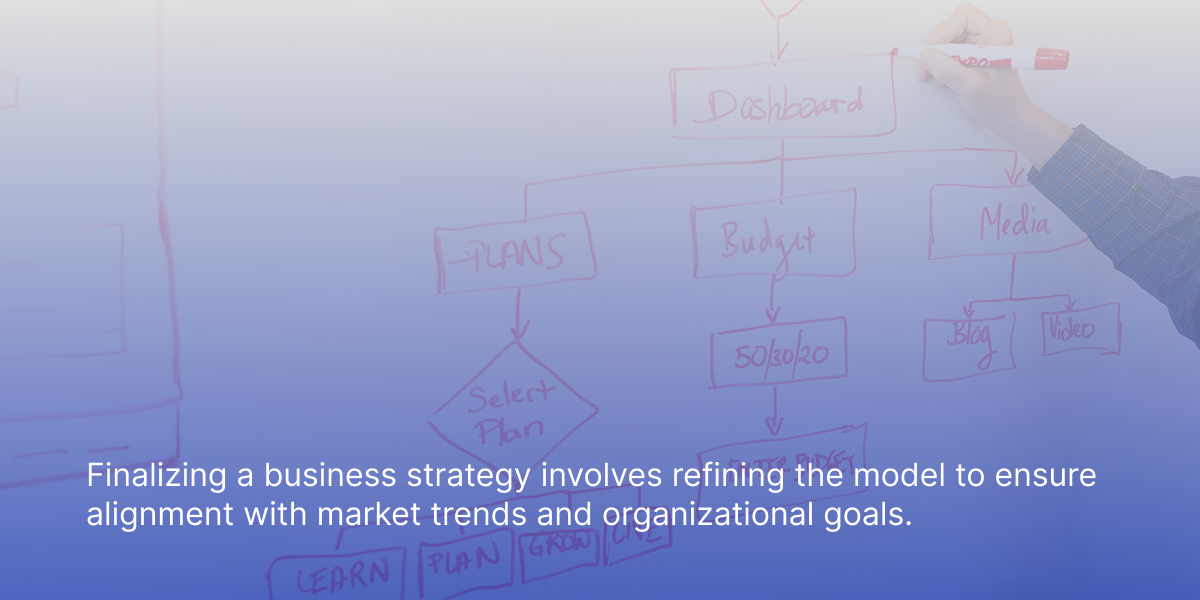
To finalize the strategy, entrepreneurs should conduct market research, analyze their competitors, and assess their company’s strengths and weaknesses. They should also consider innovative business models, such as subscription-based or freemium models, and explore strategic partnerships to enhance their competitiveness. By finalizing a solid business strategy, companies can establish a strong foundation for success, drive growth, and stay ahead of the competition.
Additionally, using tools like the Business Model Canvas can help visualize and design a successful business model, and free templates can be used to create a comprehensive business plan.
Summary
In summary, developing a winning business model starts with creating an initial business model using tools like the Business Model Canvas. This intricate process requires assembling distinct steps which contribute to how a company creates revenue streams and provides value. Engaging in comprehensive market research, crafting an attractive value proposition, and delineating customer relationships are all pivotal elements for constructing a solid business framework. Employing instruments such as the Business Model Canvas can greatly improve both the vision and efficiency of your business strategy.
To secure long-term achievement and competitive edge for your enterprise, it’s imperative to grasp these best practices fully while applying them accurately. It’s important to note that a successful business model adapts over time as it responds to changes in market dynamics and shifts in consumer demands. Maintain flexibility, foster continuous innovation, and with this approach, your venture is set up to prosper amidst the ever-evolving environment of 2025.
Frequently Asked Questions
What is a business model?
A business model describes how a company generates revenue and delivers value to its customers, outlining the approach taken to create and distribute that value.
Understanding this framework is essential for evaluating a company’s success and viability.
Why is market research important in creating a business model?
Market research is vital as it reveals customer preferences and pain points, allowing you to tailor your offerings effectively. This insight directly enhances your business model by ensuring it aligns with market demand and helps enhance customer satisfaction.
What is the Business Model Canvas?
The Business Model Canvas is a visual framework that allows you to understand and implement a business model clearly and concisely on a single page, featuring nine essential building blocks.
This business model based tool effectively addresses the key aspects necessary for a successful business strategy.
How can I identify key resources for my business?
Identifying key resources involves assessing essential assets like staff, capital, and intellectual property needed to produce your products and deliver value to customers.
Consider how these resources can be acquired through ownership, leasing, or supplier relationships to optimize your business operations.
What are the benefits of using the Business Model Canvas?
The agile approach of the Business Model Canvas improves transparency and team dialogue, facilitating more rapid modifications to business strategies. It permits simpler iteration and evolution than conventional business plans, allowing for easier adjustments and challenging the status quo.



